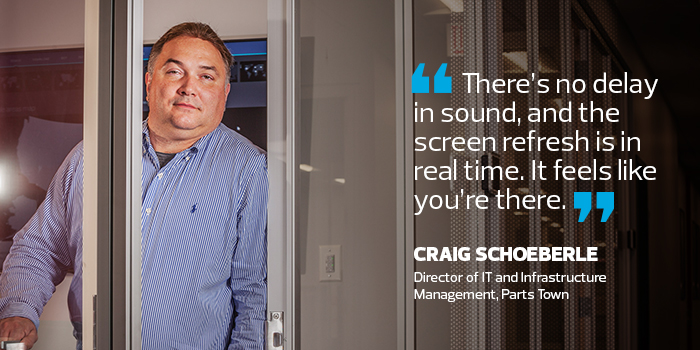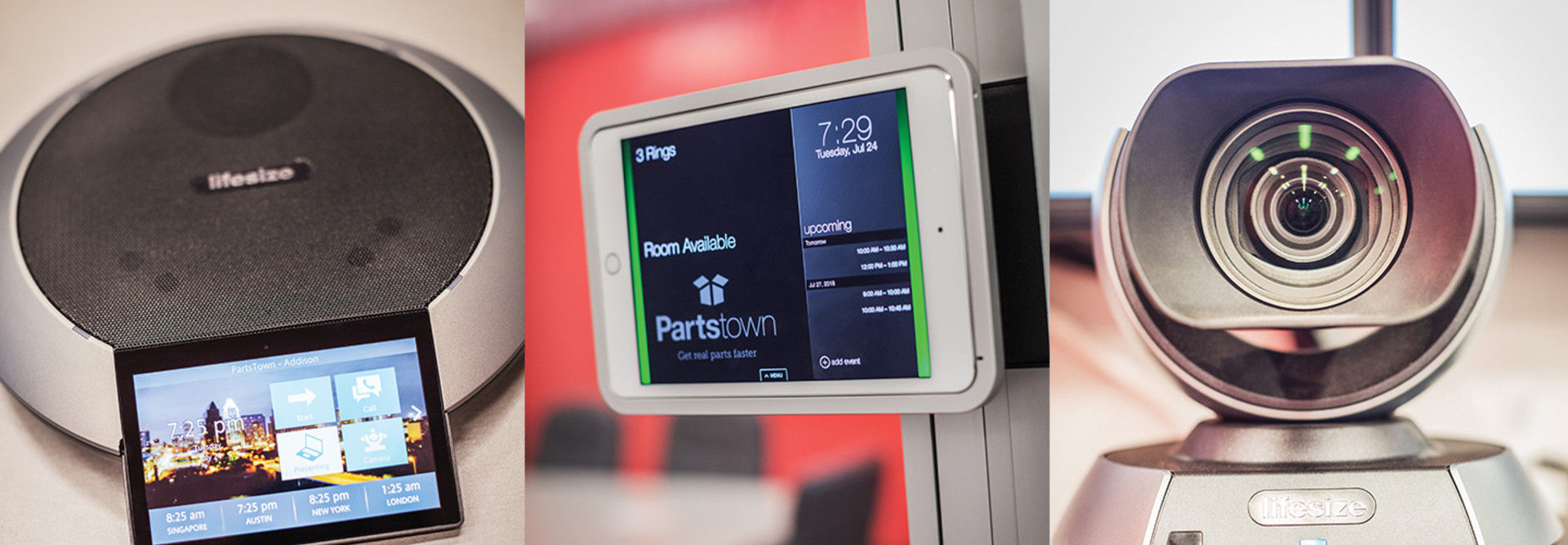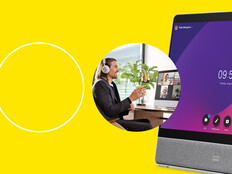Revolutionize Your Meetings with Cutting-Edge Tech
Hi, who just joined the call?”
“Bob? Is Bob still on?”
[30 seconds of silence.]
“Hi, this is Bob. I forgot to take myself off mute!”
Anyone who works in an office is familiar with those common conference call phrases. For many organizations, such meetings waste huge amounts of time and frustrate employees.
Organizations today thrive on collaboration. The rise of mobility and remote work means much of that collaboration happens only with the aid of IT solutions. But many of those tools sap productivity, even as they help teams to connect.
The good news is that technologies exist today to solve those challenges, and some companies are deploying them with great results. In the videoconferencing space especially, companies such as Lifesize, Polycom, Zoom and Cisco Systems are providing technologies to better support remote work, satisfy employees and deepen engagement among staff, all with little management required by IT teams.
Even just a few years ago, it seemed to many observers that communications were trending toward the less personal (from phone calls to email and text messages), rather than toward the immersive experience of video. But technology advances — including faster and more reliable internet connections, better high-definition cameras and larger and less expensive high-resolution monitors — have helped vendors to meet the market’s demand for better collaboration tools.
“I wouldn’t say we had any major issues with conference calling, but it’s just not as collaborative as a videoconference,” says Craig Schoeberle, director of IT and infrastructure management at Parts Town, an Addison, Ill.-based kitchen parts supplier. The company implemented cloud-based videoconferencing from Lifesize in 2016 and uses the technology to facilitate meetings between managers and remote teams. “There’s no delay in sound, and the screen refresh is in real time. It feels like you’re there.”
Better Videoconferencing Furthers Authentic Collaboration
Schoeberle has used video collaboration tools on and off since the late 1990s, when, as he recalls, “it was a very choppy experience, if you could even establish a connection.”
That’s not the case today.
“Videoconferencing has come a long way,” says Schoeberle, noting that Parts Town managers are so enamored of their Lifesize solution that the company designed a conference room around the tool at its new headquarters. “It really brings the other meeting participants into your space.”
Anyone in a meeting can share his or her screen to show a presentation or bring up a document for real-time group editing. The company’s new conference room has two 70-inch displays mounted side by side on the wall, allowing users to see content on one screen and call participants on the other. The company also outfitted the room with extra insulation to prevent echoes, painted part of the room red to reduce glare and worked with contractors to run wiring under the floor to the conference table.

Photography by Bob Stefko
Employees and managers can schedule video meetings in advance, place video calls by clicking on a person’s name in the Lifesize directory and even merge meetings or remove participants with a single click. Users can also start a conversation with text chat, and then escalate the conversation to a video call if both parties are available.
Is video really all that different from voice? With either medium, team members likely use more or less the same words to exchange information. But experienced users say that the benefits of video collaboration include more authentic connections among employees and increased engagement during meetings.
Deeper Engagement Boosts Morale and Revenue
It’s easy for employees to zone out during phone conferences because they can’t be seen; for that reason, some employers now require staff to use videoconferencing for any meeting they can’t attend in person.
NterOne, an IT training provider based in Reston, Va., began using Cisco’s cloud-based Collaboration Meeting Rooms several years ago to enhance online training, and also purchased Cisco TelePresence SX10 and SX20 devices. Anthony Hamilton, NterOne CEO, says the additions significantly improved the quality of remote training.
“There’s definitely a richer experience, and it’s driven more interactions and more discussions,” Hamilton says. “Before, it was easy to disappear online and not really engage. Now, the instructor has the ability to really capture the attention of the students.”
The video tool deployment coincided with a boost to instructor morale, an increase in course evaluation scores and a 20 percent spike in revenue, he says.
Telework Tech Mimics In-Person Meetings
The all-remote staff of Museum Hack, a New York-based company that offers unconventional tours of such august institutions as the Metropolitan Museum of Art, relies on videoconferencing from Zoom to stay connected. Michael Alexis, marketing director and IT manager for the company, says that teams like to use the “Brady Bunch” mode, which shows participants’ faces on the screen all at once and mimics the experience of being in the same room.
“The closer you can get to face to face, the better,” Alexis says. “You can see people smile, you can see how they’re reacting. You can see the emotional experience people have during a conversation.”

Parts Town has used videoconferencing to walk remote teams through tasks where visual information is important, such as IT upgrades. More often, the technology facilitates everyday interactions between managers and mobile sales staff.
Employees are more engaged in video sessions than they are during conference calls, and tend to talk over each other less because they can read one another’s body language. “It’s really become an enabler of the remote workforce,” he says.
Education Smooths Videoconference Adoption
Some organizations may initially resist video — in part due to past experiences with technology glitches, says Rich Costello, an IDC senior research analyst who covers unified and enterprise communications infrastructure.
“There have been bad experiences, no doubt, and that has defined and hurt the industry in the past,” he says. “Today, I don’t have to go into some room on the other side of the building. I’ve got everything I need on my desktop.”
Parts Town educates all of its new employees about the Lifesize solution during the onboarding process. Those sessions last less than an hour, Schoeberle says, but they make a significant difference in how comfortable employees are with
the system.
Although video collaboration is the focus of his work, Costello admits that there are days when even he would prefer to skip the task of tidying up his home office and hop on a phone call instead of a video chat. Companies should be prepared, he says, to face cultural barriers to video implementation, including resistance from remote employees accustomed to working in their pajamas.
“Unless the company says, ‘Everyone is doing video,’ if it’s left to preference, sometimes users will do video and sometimes they won’t.”
Over time, employees typically come to appreciate the benefits of video solutions, as Costello has.
“I’m kind of isolated in my home office,” he says. “Sometimes it’s nice to talk to someone face to face.”









